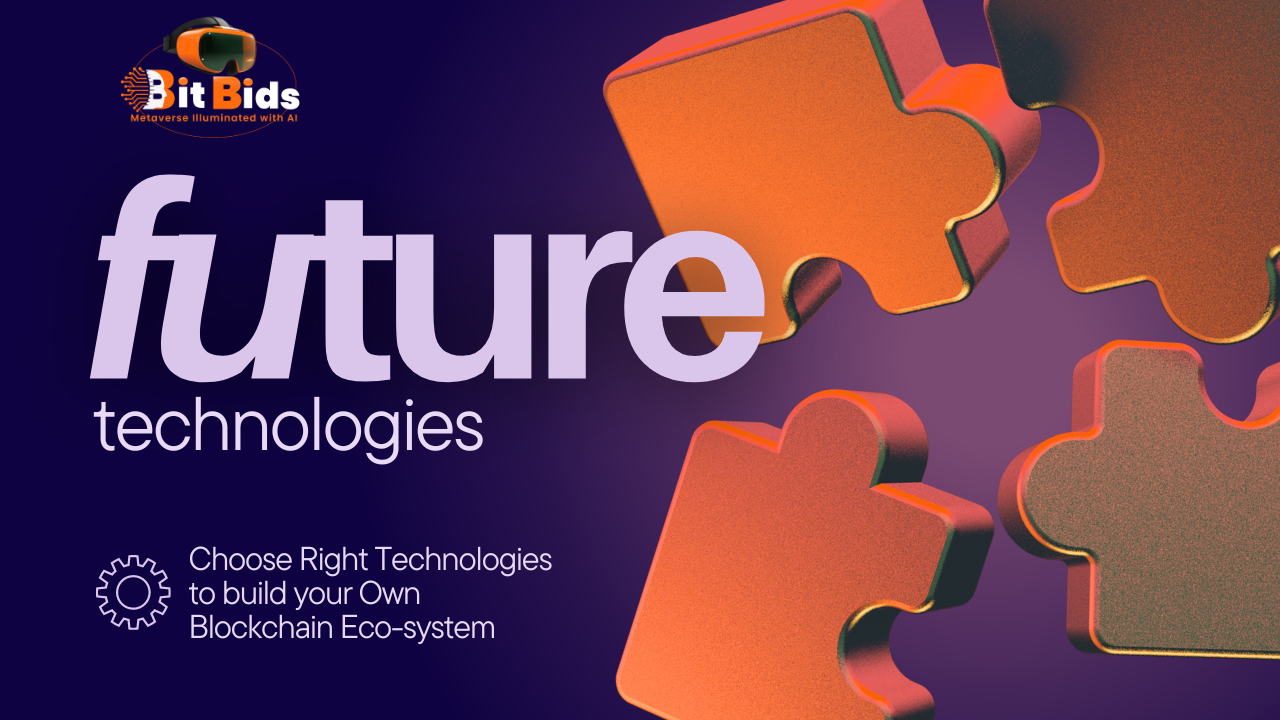Top Technologies to Build Own Blockchain Ecosystem

In the ever-evolving landscape of technology, the concept of building a personal blockchain ecosystem has become a compelling endeavor for innovators and enthusiasts alike. As the decentralized and transparent nature of blockchain continues to reshape industries, the prospect of creating one’s own blockchain ecosystem opens doors to endless possibilities. This blog explores the top technologies that empower individuals and organizations to embark on the journey of crafting their own unique blockchain solutions. From consensus algorithms to smart contracts and decentralized applications (DApps), we delve into the fundamental building blocks that enable the creation of a robust and customized blockchain ecosystem. Join us on this exploration of the cutting-edge technologies driving the decentralized future.
Top Technological Stacks Used For Blockchain & Smart Contract Development
Discover the pinnacle of blockchain programming languages for smart contracts and dApps development. Optimal choices include Solidity, Go, Rust, С++, Move, and Motoko. Make a strategic selection and ensure success by enlisting skilled developers to maximize the potential of your chosen language.
RUST
Rust, a relatively new blockchain programming language, gained prominence through Parity’s Ethereum client. Gavin Wood’s endorsement, especially in the context of Polkadot and Substrate, spurred widespread adoption, empowering high-speed networks like Solana, NEAR, and Secret Network.
GO
Go, entrenched in the blockchain realm, originated with Ethereum’s Geth client. Further adoption occurred with Cosmos and its SDK, accelerated by Tendermint’s BFT consensus, making Go widely used in various capacities.
C++
C++ is an iconic programming language employed by Satoshi Nakamoto for Bitcoin. This legacy extends to altchains like Litecoin, PIVX, Qtum, Dogecoin, and others. Additionally, C++ powers EOS and Telos blockchains.
Solidity
Solidity, influenced by C++, Python, and JavaScript, amalgamates their beneficial features. It stands out as the go-to language for global developers in the blockchain industry, particularly in DeFi projects.
MOVE
Move, born from Facebook’s Novi for the Libra project, redefines blockchain languages with a resource-oriented model based on Rust. It ensures transaction authenticity, modular development, and bytecode efficiency.
Java
Java’s object-oriented approach and platform-independent bytecode, bolstered by its powerful JVM, contribute to its prominence in distributed systems, including blockchain development. Increased demand for blockchain developers is evident.
Remix IDE
Ethereum relies on various tools for smart contract development, with Remix standing out as an accessible browser-based solution for writing, debugging, testing, and deploying contracts in Solidity.
Truffle Framework
Truffle, an Ethereum framework, provides a development environment for Ethereum-based apps. It supports custom deployments, facilitates contract coding, and enables automated testing using Chai and Mocha.
Solc
Solidity, akin to ECMA script, creates Ethereum smart contracts. To make it readable for EVM, Solc (Solidity Compiler) is essential. It exists in two forms: solc coded in C++ and solc-js using Emscripten for cross-compiling.
Solium
Security is paramount in blockchain app development. Solium, a tool, formats, and addresses security issues in Solidity Code. It ensures proper formatting and checks for vulnerabilities. Install it with npm.
Geth
Geth, an Ethereum client in Go, functions as a node for the Ethereum platform. It facilitates mining ether tokens, creating smart contracts, transferring tokens, and exploring block history.
Embark
Embark, an Ethereum dApp development framework, streamlines creation and deployment. It facilitates smart contract development in JavaScript, handles migration for multiple contracts, and supports test-driven development across various blockchains.
Ganache
Ganache, part of Truffle Suite, facilitates the creation of private Ethereum blockchains for dApp testing. It offers a cost-free testing environment with adjustable mining speed and gas costs.
Metamask
Metamask, a wallet and browser extension, connects the Ethereum blockchain with Chrome or Firefox. It securely stores keys for ERC20 tokens and Ether, integrates with Shapeshift and Coinbase for trading, and supports Ethereum test networks, catering to developers.
Mist
Mist, the official Ethereum wallet for dApp development, is compatible with Linux, Mac, and Windows. When setting it up, choose a strong password, as it cannot be changed later.
Blockchain Testnet
When crafting Ethereum Virtual Machine programs, consider the cost of gas and app launch. Testing is essential, as mistakes are irreversible on the immutable Ethereum blockchain. Utilize blockchain testnets for risk-free dApp development with the mentioned tools. At Bidbits, our blockchain developers grasp various tools and technologies for building robust and secure dApps.
Steps Involved in Developing a Blockchain Solution
Developing a blockchain solution is a time- and research-intensive endeavor tailored to your unique business. Regardless of your goals, specific steps must be followed for successful development, ensuring a thorough and customized approach to meet the demands of your project.
Step 1: Recognize an Issue to Address
While the benefits of blockchain solutions are enticing, they are not one-size-fits-all. Before diving in, align your business needs with blockchain use cases. Develop a problem statement, ensuring blockchain can effectively address challenges. Decide on migration or building anew.
Step 2: Outline Your Business Requirements
Proceed by outlining your business requirements, ensuring comprehensive coverage. Identify on-chain and off-chain technologies for a holistic ecosystem. Utilize this information to formulate a tangible product roadmap, providing a structured approach for meeting deadlines and resource allocation.
Step 3: Determine a Consensus Mechanism
Proceed by selecting a consensus mechanism, a methodology essential for trust and security in a decentralized network. Options include Proof of Work, Proof of Stake, Byzantine Fault-Tolerant, Deposit-Based Consensus, and Proof of Elapsed Time.
Step 4: Select the Optimal Blockchain Platform
Choosing the right platform for your blockchain application is critical, as it determines your development team’s required skills. Extensive research is essential to align the chosen platform with your business needs. Evaluate based on problem-solving capabilities, consensus mechanisms, costs, developer requirements, and timelines.
Step 5: Architect Your Blockchain Nodes
Essential choices involve permissioned or permissionless blockchains, programming languages, and development factors. Determine the need for a private, public, or hybrid solution, choose between cloud and on-premises nodes, and select the operating system. Conduct thorough research to align options with objectives, resources, and budgets.
Step 6: Strategize Your Blockchain Configuration
Prepare for various configuration elements on most blockchain platforms, such as permissions, asset issuance, key management, and block signatures. Some elements can be modified at run-time, but proactive planning ensures smooth development.
Step 7: Construct APIs for Your Application
Platforms vary in pre-made API availability. Depending on your needs, you may have to create APIs for tasks like key pair generation, address generation, audit functions, data authentication, storage and retrieval, and smart-asset lifecycle management, including smart contracts.
Step 8: Develop the User Interface
After planning the entire app, proceed to design the user interface (UI) for each software component. APIs integrate with back-end UIs, with visual designs influencing the app’s appearance and technical designs shaping its architecture.
Step 9: Select an Accelerator for Enhancing Your Blockchain Application
After constructing your blockchain app, ensure deployment success with a hardware accelerator for compute-intensive applications. It enhances performance, flexibility, and power efficiency by optimizing transaction validation, governance, and data storage components, leading to faster transactions and improved output.
Concluding thoughts
In the dynamic landscape of blockchain technology, the role of robust ecosystem protocols is paramount. As 2024 unfolds, these protocols emerge as the foundation of innovation, driving groundbreaking platforms. Bidbits, a leading blockchain development company, stands at the forefront of this transformative era. With expertise in top blockchain protocols, Bidbits redefines possibilities. Their adept team of blockchain developers, chosen for their skills, reflects a commitment to excellence. In a field where staying ahead is essential, Bidbits excels in crafting tailored solutions. Organizations seeking blockchain power turn to Bidbits for cutting-edge development services. Hiring blockchain developers through Bidbits ensures an expert-guided journey. For unparalleled blockchain solutions, contact Bidbits today, embracing a future shaped by expertise and innovation

